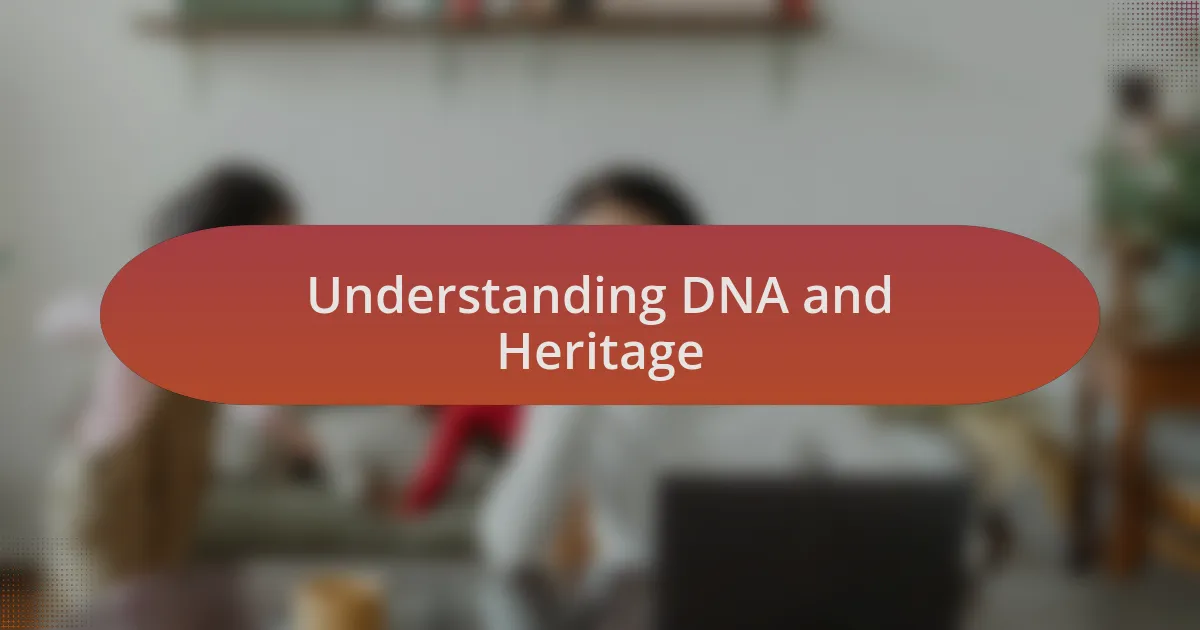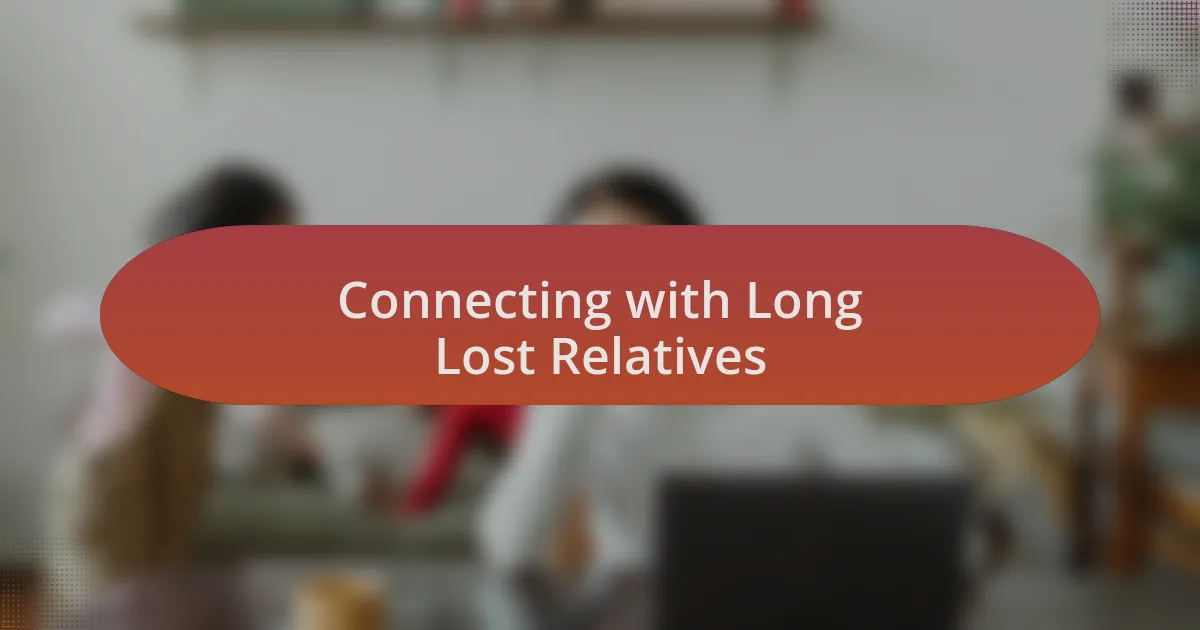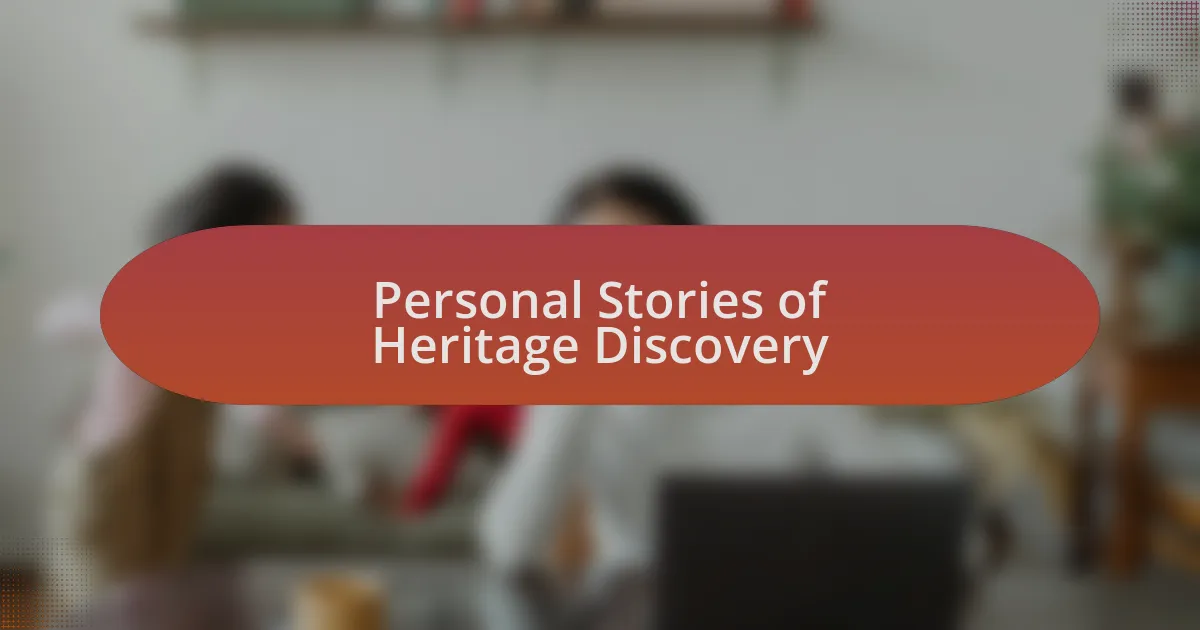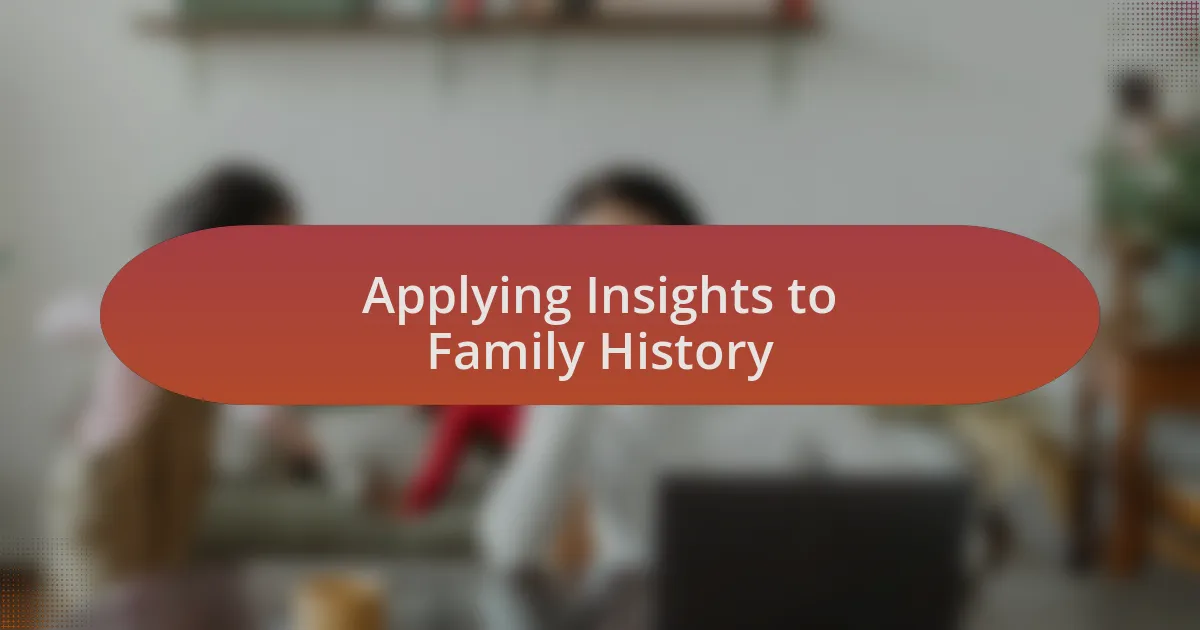Key takeaways:
- DNA testing reveals unexpected connections to ancestry, enhancing understanding of personal identity and heritage.
- Analyzing DNA results involves seeking deeper connections beyond mere percentages, fostering bonds with distant relatives.
- Discovering family history through stories and documents deepens emotional connections and ignites passion for genealogy.
- Integrating insights from DNA results into family narratives enriches the understanding of identity across generations.

Understanding DNA and Heritage
Understanding DNA can feel like unearthing a hidden treasure chest of our past. When I received my DNA results, I was struck by an overwhelming mix of wonder and curiosity. How could a simple swab contain connections to generations of ancestors I had never known?
Heritage isn’t just about names on a family tree; it’s woven into our DNA, telling stories of survival, migration, and adaptation. I remember feeling a sense of belonging when I discovered my connection to a lineage that spanned continents. It was as if each marker on my DNA was a whisper of my ancestors, speaking to me across the ages.
Have you ever considered how different your life might be if you knew your heritage? For me, uncovering my genetic roots sparked a profound reflection on identity. I realized that understanding where I come from provides not just context but also a richer narrative of who I am today.

The Role of DNA Testing
DNA testing plays a transformative role in revealing our personal history. I recall the moment I opened my DNA report, my heart raced as I processed the results showing unexpected links to regions in Europe I had never thought possible. It was more than just data; it felt like each percentage represented a part of my story waiting to be told.
With DNA testing, every result can unlock a door to understanding. For instance, when I discovered a connection to a small village in Italy, it lit a spark of curiosity in me. Why did my ancestors leave? What was their journey like? These questions deepened my appreciation for their sacrifices and adventures.
This powerful tool also enables connections with distant relatives, which can be both surprising and emotional. I remember receiving a message from a distant cousin, sharing tales of our shared ancestors. It highlighted how DNA testing doesn’t just trace heritage; it fosters bonds across generations, creating a true sense of family that transcends time and distance.

Tools for Discovering Ancestry
Tools such as genealogical databases can significantly enhance your search for ancestry. I remember diving into one of these platforms after my DNA test results arrived, feeling like a detective piecing together a complex puzzle. Each entry and historical record I uncovered told a story, adding layers to my understanding of where I came from.
Family trees are another invaluable tool that can visually map out your heritage. I vividly recall charting my family’s lineage and finding that one branch led to an entirely different country. It was a thrilling moment, sparking a whirlwind of emotions as I realized that my roots extended far beyond what I initially imagined.
Lastly, I found that online forums and ancestry groups serve as incredible resources for connecting with others who share similar interests. Engaging in discussions about our findings often brings new perspectives and insights. Who could have guessed that sharing my journey could inspire someone else to uncover their own? It’s in these collective experiences that the true essence of discovering ancestry lies.

Analyzing DNA Test Results
Analyzing DNA test results can feel overwhelming at first. When my own results came back, I was struck by the sheer volume of data presented. It was like staring at an intricate map with countless possible paths, begging for exploration. I couldn’t help but ask myself, “How do I make sense of this information?”
I learned that starting with the high-level ancestry composition was often the best approach. My test revealed unexpected percentages of ethnicities and regions, igniting curiosity about heritage I had never considered. I distinctly remember the excitement of discovering a 10% Scandinavian background; it felt like a hidden piece of my identity suddenly brought to light. The challenge, then, was delving deeper—seeking concrete connections rather than just percentages on a screen.
Exploring family matches is another critical aspect of DNA analysis that enriched my understanding. I reached out to distant relatives unearthed by the test, and these conversations were eye-opening. One cousin shared stories of our ancestors that filled the gaps I’d never known existed, leading me to wonder: how much history is just waiting to be uncovered through these connections? Each match felt like a bridge to my past, reminding me that the numbers alone can only tell part of the story.

Connecting with Long Lost Relatives
Reaching out to long-lost relatives can be both thrilling and a bit intimidating. I remember the first time I connected with a third cousin; it was like opening a door to a world I never knew existed. We exchanged emails filled with laughter, questions, and a longing to fill in the pieces of our shared family puzzle—who were our great-grandparents, and what stories had been passed down through generations?
As connections grew, I found myself immersed in family histories that ignited my passion for genealogy. One relative shared an old photograph that had been gathering dust for decades; it was a snapshot of a family reunion from the 1950s. Seeing faces that resembled mine stirred something profound within me, sparking a sense of belonging I hadn’t realized I was missing. What stories were wrapped up in those familiar smiles, I pondered, and how had time transformed our family narrative?
Sometimes, I think about the relationships that could blossom from these discoveries. Each newly uncovered relative represents not only a blood connection but also a chance for shared experiences and memories. Have you ever wondered about the bonds that might exist, waiting to form simply because we were brave enough to reach out? Embracing this journey has shown me that while DNA links us, it is the heartfelt conversations and stories that truly unite us as family.

Personal Stories of Heritage Discovery
Uncovering my family’s history felt like peeling back the layers of an onion, revealing unexpected surprises at each turn. One afternoon, as I combed through old family letters, I stumbled upon a note written by my grandmother to someone I had never heard of. Curiosity piqued, I realized this mystery relative was my great-aunt, who had been estranged from the family for decades. Reading her heartfelt words made me wonder: what led to their separation, and how would this impact my understanding of our family’s resilience?
Another significant moment came during a family gathering where stories flowed freely. As cousins recounted tales of our ancestors’ journeys across oceans, I felt an emotional connection I hadn’t anticipated. Each anecdote painted vivid images in my mind—one cousin even spoke of a great-grandfather who fought in wars to secure freedom for future generations. Listening to these stories left me questioning how those experiences shaped our family’s legacy and perhaps even my own dreams and aspirations.
I often reflect on how this journey into my heritage has shaped my identity. Learning about the struggles and triumphs of my ancestors evokes a profound sense of pride, prompting me to ask: how can I honor their legacy in my own life? It’s a beautiful reminder that heritage isn’t just about names on a family tree; it’s about the lives lived, the lessons learned, and the bonds formed across time and distance.

Applying Insights to Family History
Once I started integrating the insights from my DNA results into my family history research, it felt like finding missing puzzle pieces. For instance, when I discovered distant relatives from a particular region that echoed in my heritage, I felt compelled to explore that area. Visiting that place and walking where my ancestors once tread deepened my connection, making me wonder: how does our environment shape our identities across generations?
As I began to weave these newfound insights into our family narratives, it struck me that every detail counts. One evening, while sharing the stories of our heritage with my children, I realized the richness of our lineage seemed to come alive in their eyes. I asked them questions about what it meant to them to have ancestors who persevered against adversity. Their response surprised me: they felt empowered to carry forward that legacy, prompting me to consider how we can honor our family’s journey in our daily lives.
Engaging with these insights personally has transformed the way I view my family history. Instead of just dates and names, I now see layers of emotion and context that bring our stories to life. It truly makes me think about: how can I inspire the next generation to appreciate our roots not as a distant memory, but as a living part of who we are?